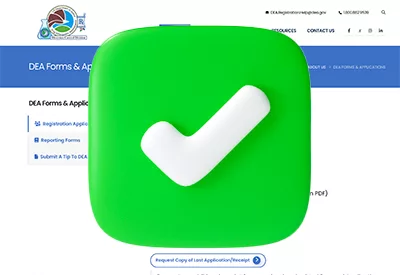Phenobarbital for Inpatient Treatment of Alcohol Withdrawal

Mladen Nisavic, MD. Director of Burns and Trauma Psychiatry, Massachusetts General Hospital, Boston, MA.
Dr. Nisavic has no financial relationships with companies related to this material.
CATR: Let’s start with a quick refresher on barbiturates—where they fit pharmacologically and how they compare to benzodiazepines (BZDs) when it comes to alcohol withdrawal.
Dr. Nisavic: Barbiturates were used for alcohol withdrawal management long before BZDs (eg, lorazepam, diazepam, chlordiazepoxide) became available. Around the world, phenobarbital remains one of the more commonly prescribed medications for alcohol withdrawal. What makes barbiturates, including phenobarbital, distinct from BZDs is that they operate on two fronts. Like BZDs, barbiturates enhance GABA-ergic activity, albeit via a different mechanism (by increasing duration of ion channel opening). Additionally, barbiturates directly inhibit glutaminergic tone. That dual mechanism of
action may be particularly relevant in alcohol withdrawal because the syndrome is fundamentally about a GABA/glutamate imbalance: chronic heavy drinking pushes the brain to down-regulate endogenous GABA tone and up-regulate glutamate. A medication that has a corrective action on both receptors may offer an advantage over a drug that works on GABA alone.
CATR: Are there other advantages of phenobarbital over the more common approach of treating alcohol withdrawal with BZDs?
Dr. Nisavic: Two issues stand out. First relates to the phenomenon of BZD “resistance.” Though exact definitions vary, there exists a subset of patients with severe alcohol withdrawal who do not achieve adequate symptom control with BZDs, even with very large doses (Langlois H et al, Canadian J Emerg Med 2020;22(2):165–169). These patients may wind up intubated or receive propofol simply because the team runs out of safer options. Phenobarbital tends to work well in these patients, likely because of the dual GABA/glutamate mechanism that we discussed. Second, phenobarbital allows for a fairly straightforward dosing strategy. In my experience, it is easier to use than symptom triggered BZD protocols, where different patients can receive vastly different doses. We utilize a weight-based loading dose with the option for an additional rescue dose if needed. That covers the entire protocol for nearly all patients. There is no need for CIWA scores every two hours, which frees up nursing time, reduces room for error, and lets the primary team focus on other issues.
CATR: Do you utilize a phenobarbital taper after the initial bolus?
Dr. Nisavic: That used to be our approach. In fact, we published a protocol that utilizes a taper (Nejad S et al, Psychosomatics 2020;61(4):327–335). But we found that many patients did not complete the taper, and in fact, the taper appeared to have little impact on clinical outcomes. So, our current approach is to give a loading dose and avoid a taper altogether. We’ve seen that the half-life—about four days in most adults—is sufficiently long such that a single load covers the entire high-risk period for seizures and delirium tremens (DT). That makes the protocol attractive to emergency physicians and intensivists who are not able to reassess and revise their withdrawal management approach six times in a twelve-hour shift.
CATR: BZDs come in long-acting formulations too. Why not stick with diazepam or chlordiazepoxide?
Dr. Nisavic: I certainly still use them when the setting is right and the patient’s history suggests they will do well. But phenobarbital has the advantage of that long half-life as well as the GABA/glutamate dual mechanisms. It is available in IV, IM, and PO forms, as well, which is helpful when managing withdrawal in a medically complicated patient. In fact, I primarily utilize phenobarbital as an IM injection, which I’ve found to have a more favorable safety profile. Others prefer IV administration for its rapid action, particularly in our emergency department (ED) or ICUs.
CATR: You alluded to recommending BZDs for some patients and phenobarbital for others. What patient factors lead you to recommend phenobarbital?
Dr. Nisavic: Any patient with history of complicated withdrawal or history of poor response to BZDs would be a good candidate for phenobarbital— this includes a history of DT, seizures despite adequate BZD dosing, patients with prior episodes of BZD-induced delirium, ICU admissions, or other evidence of prior BZD resistance. I find that phenobarbital is well suited for patients who are unable to provide reliable CIWA scores. In my practice, that is patients with severe injuries, burns, or who are intubated. At least anecdotally, the phenobarbital doses we use do not seem to have the same disinhibiting effects of high-dose BZDs, so that can be an advantage, especially on medical units or in the ICU.
CATR: Walk us through your institution’s current approach step by step.
Dr. Nisavic: We use an initial phenobarbital loading dose of 10mg/kg of ideal body weight (https://tinyurl.com/nxkwvvr7). For example, a man who is 5’6” tall has an ideal body weight of 64 kg, which works out to a total load of 640 mg. That may seem like a lot, but we utilize these sorts of doses routinely. The load can be given IV or IM, either as a single dose or split into three equal parts. That is a sufficiently high enough dose to treat most patients. However, some will still show symptoms of ongoing withdrawal such as tremulousness, diaphoresis, or tachycardia. For those patients, an additional 2 mg/kg rescue dose should be given. Whenever a rescue dose is needed, an addiction medicine or psychiatry consult should be called as well for specialty consultation.
CATR: Does the protocol vary by setting?
Dr. Nisavic: The general approach is the same, though it can be adjusted depending on how acutely ill the patient is and how closely they can be monitored. For acutely ill patients in the ED or ICU, the loading dose can be given all at once. If given as a single IV dose, we recommend continuous cardiac and oxygenation monitoring throughout the dose administration and for 10 minutes afterwards to monitor for respiratory suppression. We’ve found that intramuscular administration carries less risk of respiratory complications, so we generally do not recommend special monitoring for those patients. On the medical or surgical floor, where the environment is generally more controlled, and the patients are perhaps less acutely sick, we recommend that the load is split into thirds, each third given three hours apart. The split dosing protocol gives staff and consultants three checkpoints to reassess the patient’s mental status, respiratory rate, and hemodynamics. Should a patient become somnolent after the first dose, the protocol can be stopped or paused. On the other hand, if they tolerate the first two-thirds but still have withdrawal symptoms, you can deliver the final third dose with confidence.
CATR: You mentioned you don’t obtain CIWA scores on an ongoing basis?
Dr. Nisavic: We don’t, and that is an important point. CIWA is a valuable tool for symptom driven treatment, typically with BZDs. But the fundamental approach here is different—we are not giving doses of phenobarbital to treat the emergence of specific symptoms. In this case, we are taking advantage of its very long half-life, reducing the need for repeated checks and monitoring. Another point about CIWA is that many of the items are not specific to withdrawal. Persisting agitation, anxiety, diaphoresis, and headache have many other possible causes. If these symptoms persist after the patient has received a full phenobarbital load, that is often a sign for me to explore alternate causes of those symptoms.
CATR: Do you monitor serum levels?
Dr. Nisavic: We do. We draw a serum level five hours after the load is completed. If it is given as a single dose, we draw the level five hours after the bolus. If the load is split into thirds, we draw the level five hours after the third dose. Our target is 10–20 mcg/dL, though we always use this value in the context of the greater clinical picture. Think of it like a valproate or lithium level; it’s a piece of the treatment puzzle, but one that should be used as an adjunct to your bedside exam. If you’ve given the full load, the level is 8 mcg/mL, and the patient is clammy and tremulous, that low number justifies a supplemental dose. If the level is 12 mcg/mL and the patient is starting to get delirious, look for infection, hypoxia, some other source of delirium, because most patients should have their withdrawal managed at that serum level. For patients with a level above 15 mcg/mL, I take extra precautions to avoid additional sedatives.
CATR: What other possible complications should we be looking out for?
Dr. Nisavic: Though uncommon, aspiration events are always a risk. So, monitor pulse oximetry for patients showing signs of significant sedation, especially if their level is on the high side. That said, the therapeutic index for phenobarbital in adults with normal liver function is forgiving—a level of 10–20 mcg/mL is usually adequate for withdrawal management, and even when high, we rarely see complications. Issues typically occur only in the setting of polypharmacy or serum levels above 30 mcg/mL, which is far beyond what we see when following our protocol.
CATR: Readers unfamiliar with using phenobarbital may be worried about respiratory suppression. When does this become an issue and what monitoring do you recommend?
Dr. Nisavic: When given intramuscularly, we’ve found that aggressive vital sign monitoring is unnecessary. In fact, we do not require any additional monitoring for patients who have received IM phenobarbital. We are more careful when giving the medication intravenously. As I mentioned earlier, we do monitor the respiratory and cardiovascular status for patients who receive the single-dose IV phenobarbital load where risk of respiratory complications may be higher. In fact, we only use this single dose IV approach in the ICU and ED where we are able to monitor the patient closely.
CATR: How long do you keep patients in the hospital?
Dr. Nisavic: That will depend on the patient. In an uncomplicated case, once they have received a phenobarbital load, the physiologic danger period is essentially over after 24 hours. For patients with a history of withdrawal complications, or those who received BZDs in addition to phenobarbital, I recommend an additional period of observation, at least 2–3 days. For most patients, it isn’t the withdrawal management that determines the overall length of stay. Most need to stay longer in order to arrange outpatient follow-up, start a maintenance medication like naltrexone, and ensure adequate resources are in place to ensure post-hospital success. Sometimes an extra day in the hospital to address these needs makes all the difference.
CATR: Do you use adjunctive medications?
Dr. Nisavic: We oftentimes do. Phenobarbital protects against withdrawal complications very well, but patients may be left with lingering insomnia or anxiety. Low dose trazodone or quetiapine can be helpful for these patients, though we recommend monitoring QTc whenever using antipsychotics. In surgical and burn units we routinely start gabapentin for neuropathic pain, which conveniently may also blunt anxiety and craving. Beta-blockers or clonidine can be used for isolated persistent hypertension or tachycardia, though I recommend starting low and monitoring vitals closely—once the alcohol withdrawal gets under control, these agents can cause a blood pressure drop.
CATR: What about BZDs? Might you use a little lorazepam if the patient still has residual withdrawal symptoms after phenobarbital?
Dr. Nisavic: We generally don’t advocate that approach. In addition to the potential risk of respiratory suppression when mixing sedating drugs of different classes, I have three main reservations. 1) Once you start combining medications, it becomes difficult to know what effect is caused by what medication. The picture becomes muddy, and if you need to change treatment, how do you know which direction to go? 2) Introducing BZDs may increase the risk of oversedation and delirium given their shared GABA activity. And 3) by introducing BZDs, you take a step back in terms of convenience—you are mixing approaches and might need to start CIWAs or more frequent monitoring (Editor’s note: see our interview with Dr. Gunderson on page 6 for more).
CATR: What tips do you have for hospitals, particularly those without providers experienced with prescribing barbiturates, that are interested in getting started with this approach?
Dr. Nisavic: Ultimately, phenobarbital is as safe as BZDs for alcohol withdrawal management and there is growing literature on its use in a variety of settings. But I am aware that comfort levels vary, and alcohol withdrawal can be challenging to manage. It makes sense to be cautious whenever implementing a new treatment approach. So, I recommend starting where support is highest—the ED or ICU. To have a bit more control, I would consider first implementing the protocol utilizing split-dose IM phenobarbital, as that also allows for more checkpoints and monitoring.
CATR: What about patients who leave against medical advice (AMA)?
Dr. Nisavic: Of course, we are always concerned when a patient leaves AMA in the midst of alcohol withdrawal management. That is the case regardless of the medication treatment being utilized. Specific to phenobarbital, given its long half-life, drinking after a receiving load in the hospital is a concern. Interestingly, we found that patients who received phenobarbital for alcohol withdrawal were less likely to leave AMA compared to those who were treated with BZDs, so that’s actually a potential advantage (Nisavic M et al, Psychosomatics 2019;60(5):458–467).
CATR: Any other specific tips?
Dr. Nisavic: We covered a lot! Just to summarize, our phenobarbital protocol offers an alternative approach to managing alcohol withdrawal with BZD that is just as safe, and may in fact be preferable in certain settings, like when CIWA are difficult to implement. Most patients with severe withdrawal will respond well to a loading of 10 mg/kg ideal body, and our ability to draw levels can help us discern whether residual symptoms might be due to withdrawal or perhaps due to some other reason. The option of splitting the load into three doses allows for a fair amount of versatility, multiple safety checkpoints, and still ensures that patients are adequately treated within a relatively short time span. As with BZD, no protocol is error-proof, so monitor your patient clinically to determine whether or not they need additional treatment. If a patient appears sedated, perhaps they are drinking less than reported, and it’s fine to hold one of the doses.
CATR: Thank you for your time, Dr. Nisavic.

Newsletters
Please see our Terms and Conditions, Privacy Policy, Subscription Agreement, Use of Cookies, and Hardware/Software Requirements to view our website.
© 2025 Carlat Publishing, LLC and Affiliates, All Rights Reserved.


_-The-Breakthrough-Antipsychotic-That-Could-Change-Everything.webp?t=1729528747)



